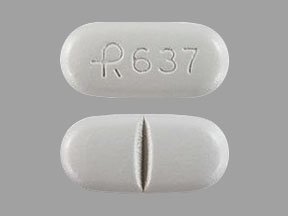Case reports have shown that gabapentin withdrawal can last for up to 5 days or longer, but the duration has not been well established in human studies. The symptoms and how long they last depend on how much of the drug you are taking and for how long you’ve been taking it.

Gabapentin withdrawal is not a common problem unless you are abusing the drug.
Abuse means taking gabapentin in higher than prescribed amounts and taking it for reasons not intended by your doctor.
A study on gabapentin abuse from 1993 through 2015 showed that people who experienced withdrawal were taking an average of 3,000 mg (600 to 8,000 mg) of gabapentin per day, but some case reports mention withdrawal symptoms at 400 mg per day.
What happens when you suddenly stop taking gabapentin?
If you are taking gabapentin at a normal dose prescribed by your doctor and you don’t have a history of substance abuse, you are less likely to have withdrawal symptoms when you stop taking it.
Higher doses and a history of substance problems pose more risk for abuse. You can start to build up a tolerance to the drug, and you may need to take even more of it to get the desired effect. This is called physical dependence.
Your brain cells (neurons) become dependent on a high dose of the drug for normal functioning. When the drug is stopped, your brain becomes temporarily disorganized. If you start to feel that you need more of the drug to function, stopping suddenly is more likely to lead to withdrawal symptoms.
Withdrawal symptoms may start within 12 hours or take up to 7 days to begin after stopping suddenly. Symptoms commonly include:
-
-
- Restlessness (agitation)
- Disorientation
- Confusion
-
Various case reports describe these other symptoms of gabapentin withdrawal:
- Headache
- Body/stomach pain
- Anxiety
- Heart palpitations
- Sweating
- Muscle twitching
- Light sensitivity
- Restless limb movements
- Nervousness
What is the treatment for gabapentin withdrawal?
There are no approved medications to treat gabapentin withdrawal. The only reliable treatment is to slowly taper the drug under the supervision of your doctor, usually a substance abuse specialist. Sometimes gabapentin is restarted to ease withdrawal symptoms before tapering off.
There is no evidence to show that other drugs or supplements — such as magnesium or CBD oil — are helpful in treating withdrawal symptoms.
Most case reports show that withdrawal patients went back onto gabapentin to relieve their symptoms. But there may be unreported cases of gabapentin withdrawal, as not everyone seeks treatment.
How can I avoid gabapentin withdrawal?
The best way to avoid gabapentin withdrawal is to only take the drug in the dose prescribed by your doctor for its approved uses.
Gabapentin is a prescription medication approved to treat certain types of seizures and nerve pain that follows a herpes infection (postherpetic neuralgia). A long-acting form is used to treat restless legs syndrome. The most common brand name is Neurontin.
Gabapentin is also prescribed and used for unapproved reasons. These are called off-label uses. Off-label uses for gabapentin include:
- Substance abuse treatment
- Migraine headaches
- Fibromyalgia
- Mental health disorders
- Insomnia
People with a history of drug or alcohol abuse may be at increased risk for:
- Tolerance
- Self-dose escalation
- Drug-seeking behavior
- Withdrawal symptoms

